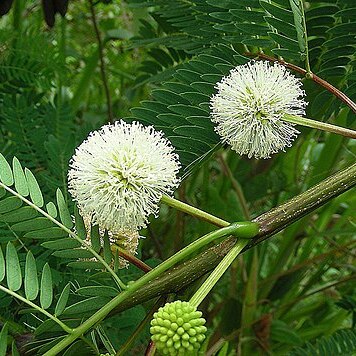Unarmed trees, usually large, the branchlets pubescent or glabrous. Leaves bipinnate, moderate or large, 2-or few-ranked; petiole prominent, bearing a gland usually near the middle; pinnae few to many, opposite, the rachis bearing glands especially terminally; leaflets usually numerous and small, inequilateral; stipules inconspicuous, caducous. Inflorescence of solitary to fasciculate pedunculate heads, axillary, or paniculate by insertion at defoliate nodes; peduncles slender; heads small, globular; flowers condensed, sessile, small; bracts small and inconspicuous. Flowers whitish; calyx campanulate to tubular-funnelform, valvate, briefly 5-dentate; corolla more or less funnelform, 5-lobed, valvate, about double the calyx; stamens 10 to many, exceeding the corolla, united below into a short, included staminal tube; anthers small, eglandular, quadrangular; ovary sessile, several-ovulate; style slender, equalling or exceeding the stamens, the stigma small. Legume diagnostic, circinnate or reniform, coiled into a complete or nearly complete circle, compressed or almost flattened but nevertheless somewhat fleshy, usually glabrous and lustrous, fairly broad, ligneous, indehiscent, septate between the seeds, the seeds transverse.
More
Trees, unarmed. Leaves bipinnate; stipules not conspicuous; petiole with gland; pinnae and leaflets in numerous pairs. Heads globose, solitary or in racemes, axillary. Flowers dimorphic or uniform, bisexual. Calyx campanulate, shortly 5-dentate. Corolla funnel-shaped, 5-lobed. Stamens numerous, basally connate into a tube; anthers eglandular. Ovary sessile, many ovuled; style filiform. Legume broadly circinate or incurved-reniform, thick, hard, not dehiscent; mesocarp spongy, at length hardened. Seeds transverse, compressed, with pleurogram; funicle filiform.
Calyx c. 2.5 mm, pubescent especially at the apex of the lobes Fruits curved in a flat plane into a complete circle, or woody, or curled; seeds biseriate, without pulp

